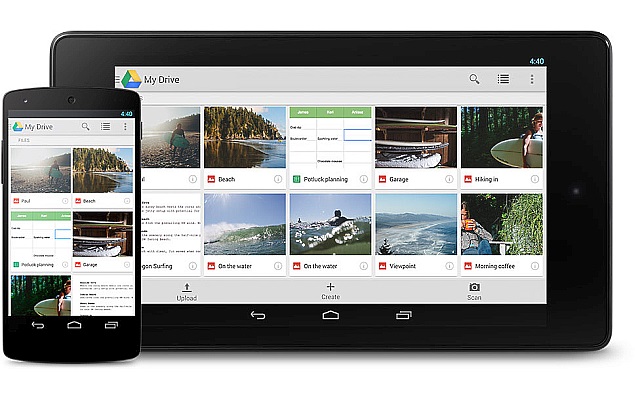Google Drive's OCR Capabilities Expanded to Over 200 Languages

Google stressed that the reason to expand the OCR capabilities is that most of the information in the world is still stored in physical forms (books, newspapers, and magazines among others) and not digital. For the uninitiated, optical character recognition converts a digital image with text into digital documents using computer algorithms. Images can be processed in (.jpg, .png, and .gif) files or in PDF documents.
Users can start using the OCR capabilities in Drive by uploading scanned document in PDF or image form after which they can right-click on the document in Drive to open with Google Docs. After choosing the option, a document with the original image alongside extracted text opens, which can be edited. Google notes that users will not be required to specify the language of the document as the OCR in Drive will automatically determine it. The OCR capability in Google Drive is also available in Drive for Android.
The company has also listed some limitations of the OCR technology, stating it will work best on cleanly scanned, high-resolution documents. While has claimed that it is still working to improve performance on poor quality scans and challenging text layouts. The company also lists that OCR will take longer than other uploads in Drive.
Google details how it's OCR technology works within Drive, "To make this possible, engineering teams across Google pursued an approach to OCR focused on broad language coverage, with a goal of designing an architecture that could potentially work with all existing languages and writing systems. We do this in part by using Hidden Markov Models (HMMs) to make sense of the input as a whole sequence, rather than first trying to break it apart into pieces. This is similar to how modern speech recognition systems recognise audio input."
Get your daily dose of tech news, reviews, and insights, in under 80 characters on Gadgets 360 Turbo. Connect with fellow tech lovers on our Forum. Follow us on X, Facebook, WhatsApp, Threads and Google News for instant updates. Catch all the action on our YouTube channel.
Related Stories
- Samsung Galaxy Unpacked 2025
- ChatGPT
- Redmi Note 14 Pro+
- iPhone 16
- Apple Vision Pro
- Oneplus 12
- OnePlus Nord CE 3 Lite 5G
- iPhone 13
- Xiaomi 14 Pro
- Oppo Find N3
- Tecno Spark Go (2023)
- Realme V30
- Best Phones Under 25000
- Samsung Galaxy S24 Series
- Cryptocurrency
- iQoo 12
- Samsung Galaxy S24 Ultra
- Giottus
- Samsung Galaxy Z Flip 5
- Apple 'Scary Fast'
- Housefull 5
- GoPro Hero 12 Black Review
- Invincible Season 2
- JioGlass
- HD Ready TV
- Laptop Under 50000
- Smartwatch Under 10000
- Latest Mobile Phones
- Compare Phones
- Vivo Y500 Pro
- Realme GT 8 Pro Aston Martin F1 Limited Edition
- Huawei Mate 70 Air
- Moto G57
- Moto G57 Power
- Motorola Edge 70
- Moto G Play (2026)
- Moto G (2026)
- MacBook Pro 14-inch (M5, 2025)
- Asus Vivobook S16 (S3607QA)
- iQOO Pad 5e
- OPPO Pad 5
- Noise Diva 2
- Noise Halo 2
- Acerpure Nitro Z Series 100-inch QLED TV
- Samsung 43 Inch LED Ultra HD (4K) Smart TV (UA43UE81AFULXL)
- Asus ROG Ally
- Nintendo Switch Lite
- Haier 1.6 Ton 5 Star Inverter Split AC (HSU19G-MZAID5BN-INV)
- Haier 1.6 Ton 5 Star Inverter Split AC (HSU19G-MZAIM5BN-INV)
















